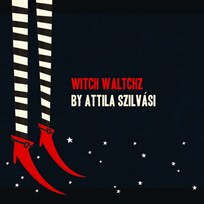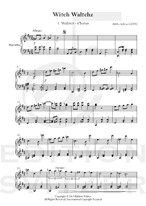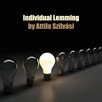
Witch Waltchz
Composer: Attila Szilvási
Instrument: Marimba
Level: Advanced
Published: 2013
Price: €16.00
Item details
-
Description +
-
Duration: 8 min.
Witch Waltchz is a grotesque waltz modeled after the classical Viennese waltz – the main waltz is followed by the waltz chain and by the main waltz again.
As the chief aim of the piece - which consists of five movements – is light entertainment, the performance should be light and playful as well. The performer might also recall the piquant rhythm of the Viennese waltz – even exaggerate it in the fifth movement to make it more theatrical. Besides exaggerating the character of this piece, it is also possible to announce each movement before playing them.
The piece was composed for my performance and presentation at the Ivana Bilic Marimba Week in Samobor, 2013.
-
-
Instrumentation +
-
Marimba
-
-
About the composer +
-
Attila Szilvási was born in 1982 in Budapest, Hungary. He started to play percussion at 10. In 1996 he was accepted to the Weiner Leó Secondary School of Music in Budapest where besides percussion he also studied composition. He was taught by Tibor Nemes, Lóránt Hajdú and Dénes Legány. He continued on his percussion studies at the Liszt Academy of Music in the faculty in Debrecen at István Szabó, he was granted master in percussion in 2006, in conducting in 2008. At present he is the principal percussionist at the Dohnányi Orchestra in Budapest, percussionist at the Budapest Concert Orchestra (MÁV). He played in almost all orchestras in Budapest and in several Symphonic Orchestras in Hungary.
During his studies he was a member of Talamba and SONUS percussion groups, where he got to know numerous inland and foreign contemporary compositions. At that time he also took part in several music competitions and was awarded the following: National University Percussion Solo Competition 2nd prize and special prize in 2002, 1st prize in 2003, International Marimba Competition in Belgium semifinalist in 2004.
He started to compose very early. His first pieces were mainly for piano, wind and percussion instruments, but lately he has concentrated on percussion, in particular on solo instrument pieces with electronic music accompaniment. In his master’s concert in 2006 his composition Gladiators of the Past and Future was played, which consists of two movements, composed for organ, percussion solo and synchronal-controlled electronic music accompaniment.
-
-
Reviews +
-
Review (Percussive Notes 62, July 2014)
Composed in 2013 for an appearance at the Ivana Bilic Marimba Week, “Witch Waltchz” is described by Attila Szilvasi as a “grotesque waltz modeled after the classical Viennese waltz.” In five movements, the composer aims to entertain and suggests that performances should be “light and playful” and urges the performer to exaggerate the character of the piece. Each movement represents a uniquely composed waltz with distinct personalities. That said, the composer suggests that the performer announce each of the movement titles before performing them. The aptly titled movements are: 1. Chorus, 2. Old Witches, 3. Menopausal Witches, 4. Cool Witches, and 5. Tipsy Witches.
Many traits make this solo suitable for players who are mature and already well developed. Polyrhythmic motifs between the hands, extended harmonic language, stylistic performance traits, and the use of alternative techniques, such as col legno, culminate to create a challenging work most appropriate for advanced college players and professionals. The style might be considered pianistic, though it is idiomatic for the marimba. “Witch Waltchz” is an excellent introduction to contemporary and creative waltz styles for percussionists, while also maintaining some traditional European roots. It is sure to add some entertainment value for the listener.
—Thad Anderson
-
-
Credits +
-
Front Cover graphics and layout: Ronni Kot Wenzell
Engraving: Attila Szilvási
Foreword: Attila Szilvási
Printed in Copenhagen, Denmark
Copyright © Edition Svitzer
www.editionsvitzer.com
-



